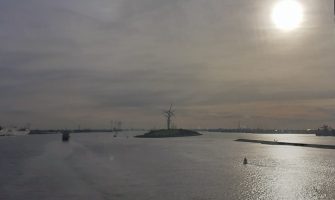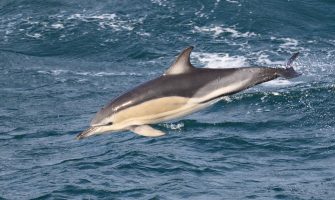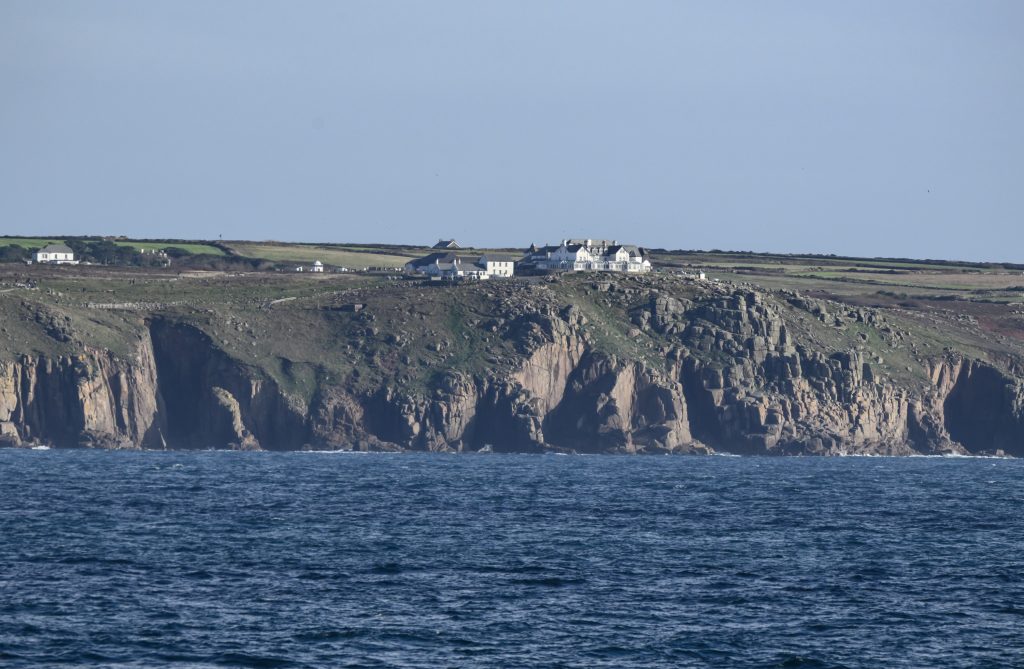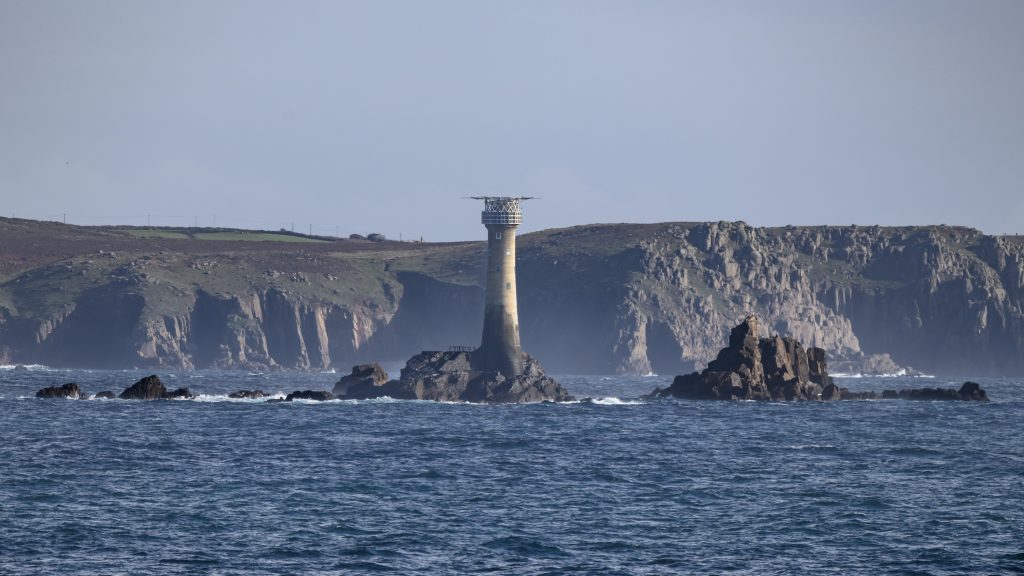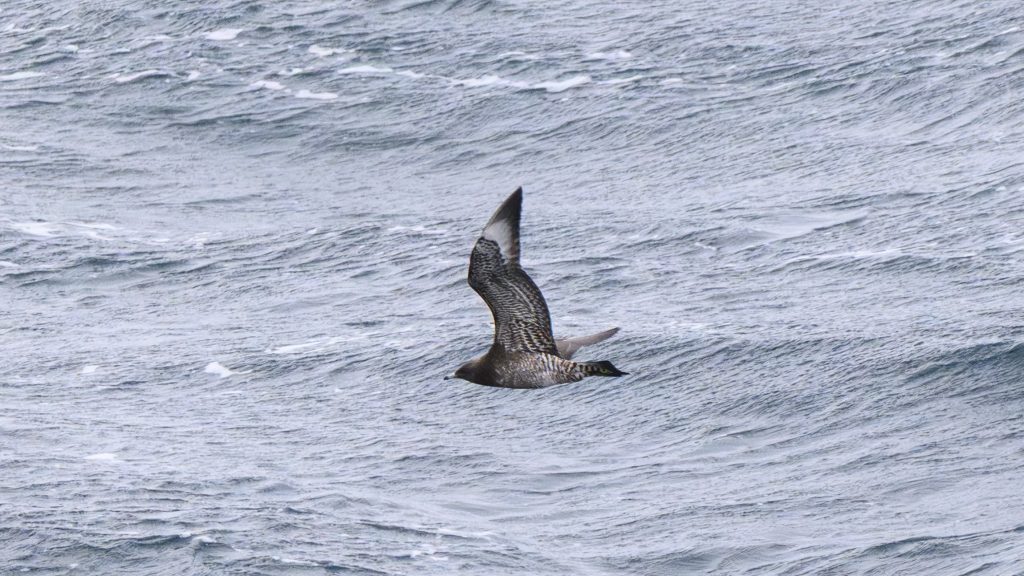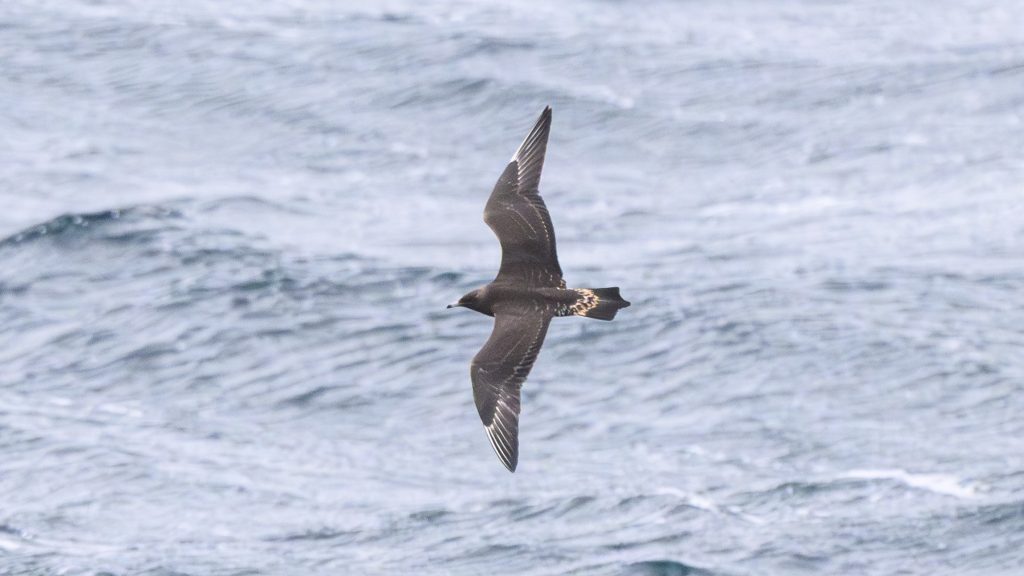29th October
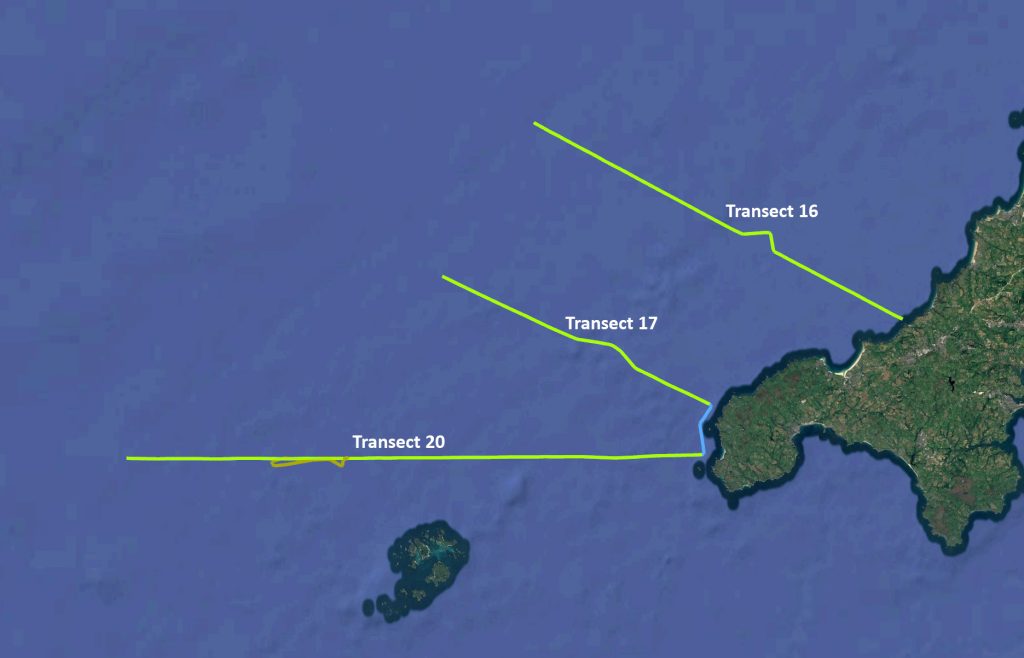
A sea state three was a great sight when we climbed up to the bridge to begin surveying transect 20, not so great was the heavy overcast, light rain and reduced visibility – what Mother Nature gives with one hand she takes with the other. Even after 40-50 minutes light levels hadn’t improved much, not that there was very much to record, there were long gaps between sightings, mainly Kittiwake for the first couple of hours.
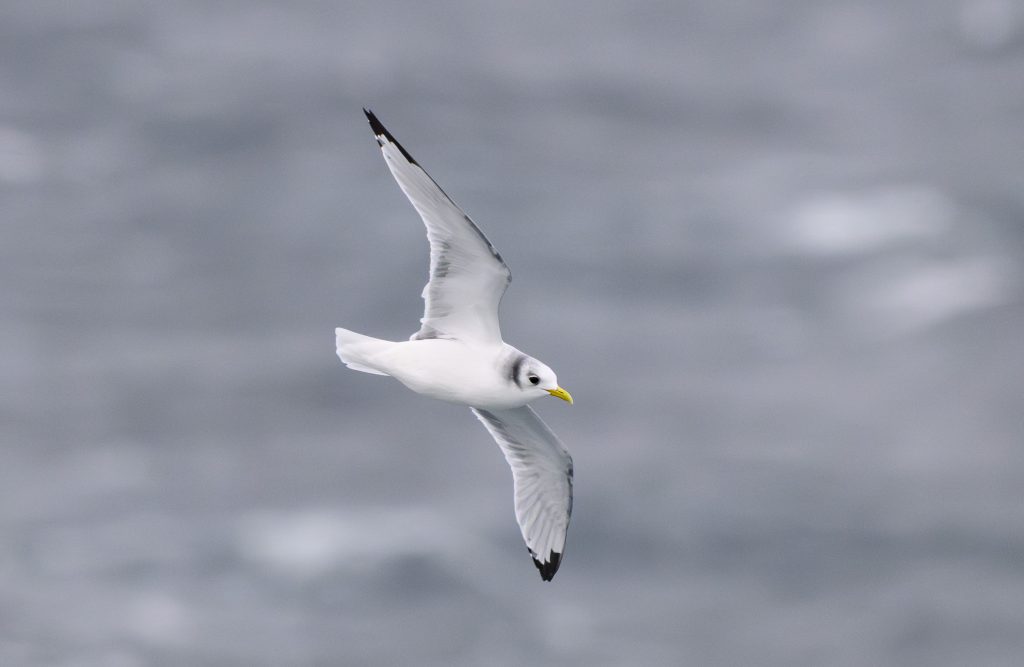
Our only cetacean sightings occurred quite early on, two distant pods of Common Dolphin ignored us completely – they do sometimes – in particular, the second group of 20 had somewhere they needed to be as they charged past at high speed.
We paused for a trawl mid-morning, the result was a (very) modest haul, this was made very public by the deck crew emptying the net into a basket on the aft deck rather than using the hopper. Still, a representative sample, we were told by the Chief Scientist. The small catch turned out to be mainly Sardine, which is what the CEFAS scientists were expecting from what they had seen on the sonar.
By the time we resumed the transect the grey skies had been replaced with sunshine and blue skies, along with a bit more wind, sea state now up to a five. However, as we had the wind and sea behind us conditions were very pleasant.

Sightings were steady, Kittiwake took top spot again with Guillemot and Gannet taking up second and third. It’s remarkable how things can change from year to year. Last year we recorded 536 birds on this transect, this year 293. In 2024 we logged 257 Gannet and 182 Cory’s Shearwater and only 2 Kittiwake, this year 52 Gannet, no Cory’s Shearwater and 102 Kittiwake.
The great thing about running east on transect 20 is that it ends just north of Land’s End and the transit to transect 17 takes us along the Cornish coast with fantastic views of the Botallack mine building clinging to the cliffs and then the lighthouse at Pendeen Watch.
Turning on to transect 17 was a bit of a wake up, with the Endeavour pitching up and over two-three metre swells and the 20 knot winds pushing lots of white horses our way. Still sightings got off to a brisk start with Kittiwake and auks zipping by, although they tailed off as we headed offshore. Birds of note were a Great Skua – the first in seven days – and a Grey Phalarope, nice to get one on transect after yesterday’s sighting between transects.
We called it a day just before sunset, which turned out to be one of the best so far on the second half. We should have a few hours surveying tomorrow morning before we start the run back to Lowestoft.
 30th October
30th October
There was a brief flash of pink and orange in the eastern sky at dawn, then the skies became a theme of variations of grey. The Captain reckoned we’d have until about 11:00 to survey, in the end the Peltic 2025 survey came to an end at 10:30 and we turned south for the long slog back to Lowestoft, and boy was the rest of the day a long slog. It took us over seven hours to travel about 40 miles, the CEFAS Endeavour isn’t the fastest vessel, but the three- four metre waves were knocking the speed back to less than four knots and the occasional big wave would virtually stop her. Still, it was good fun watching it from the bridge.
The last transect had started calm but within half an hour we were in a sea state five and by the end it was already up to a seven. Sadly, we didn’t go out with a bang, no fantastic late sighting but there was a steady trickle of birds. The best of these was a lovely juvenile Arctic Skua which passed close down the port side and I even had time to open the door and grab some photos. Otherwise, 10 Puffin were also of note, on what has been a quiet year for them.
The last transect passed without a dolphin coming to say hello, although the JNCC observers managed a Grey Seal on the other side of the Endeavour.
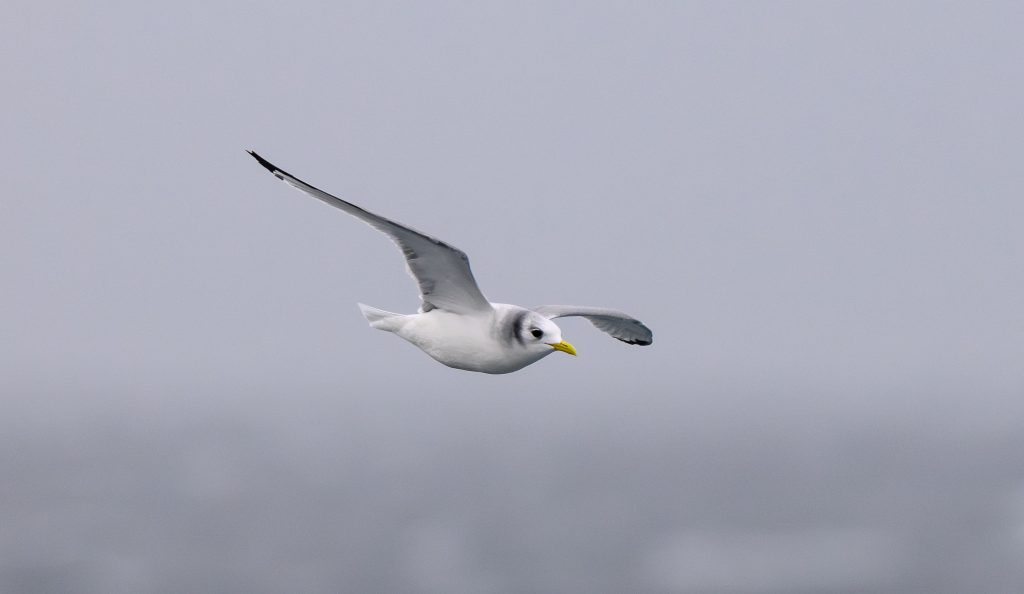
So, that’s it for another year, we’ll keep on eye open from the bridge periodically on the journey back because you never know what can turn up. We’ve also got a little diversion on the way back in that we’re going to pick up and redeploy a smart buoy (records environmental conditions) in the outer Thames estuary, that needs a software update. That’ll be something different to watch.
Animal-wise this has been a relatively quiet year; most species being seen in their lowest or near lowest numbers in the last five years. The only species which has set a new record was European Storm Petrel, which was in the English Channel in very good numbers this year.
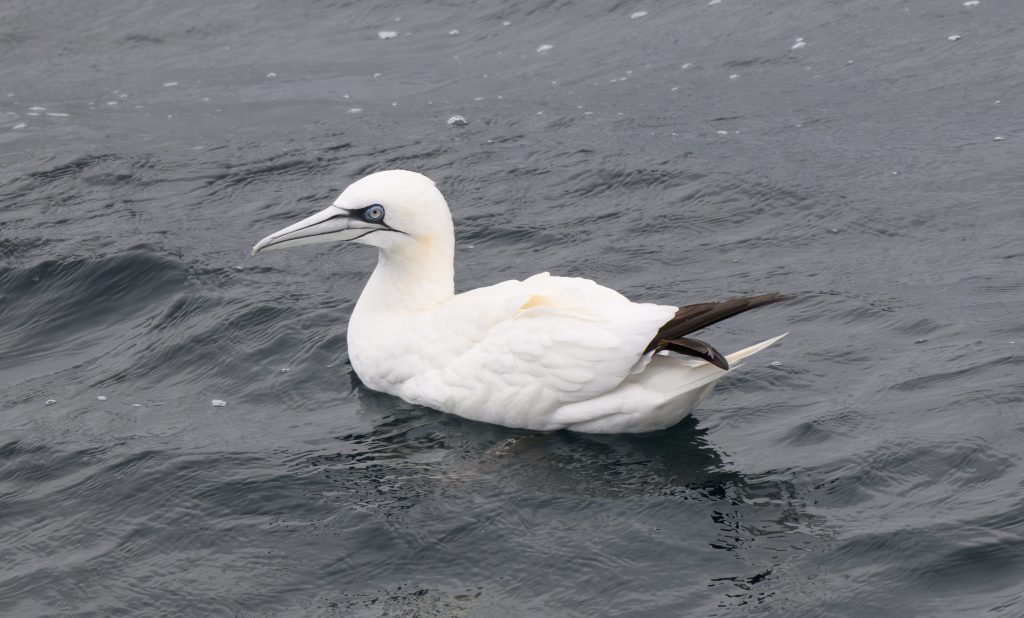
It was also good to see Gannet numbers back to well above the average for the previous four years, and there seemed to be good numbers of juveniles, particularly in the English Channel. Gannet were hit hard by bird flu and numbers last year were alarmingly low, so it’s good to see a recovery. Bird flu is having a resurgence this autumn, thankfully all the breeding seabirds will have dispersed, but wintering wildfowl flocks could be hit hard again.
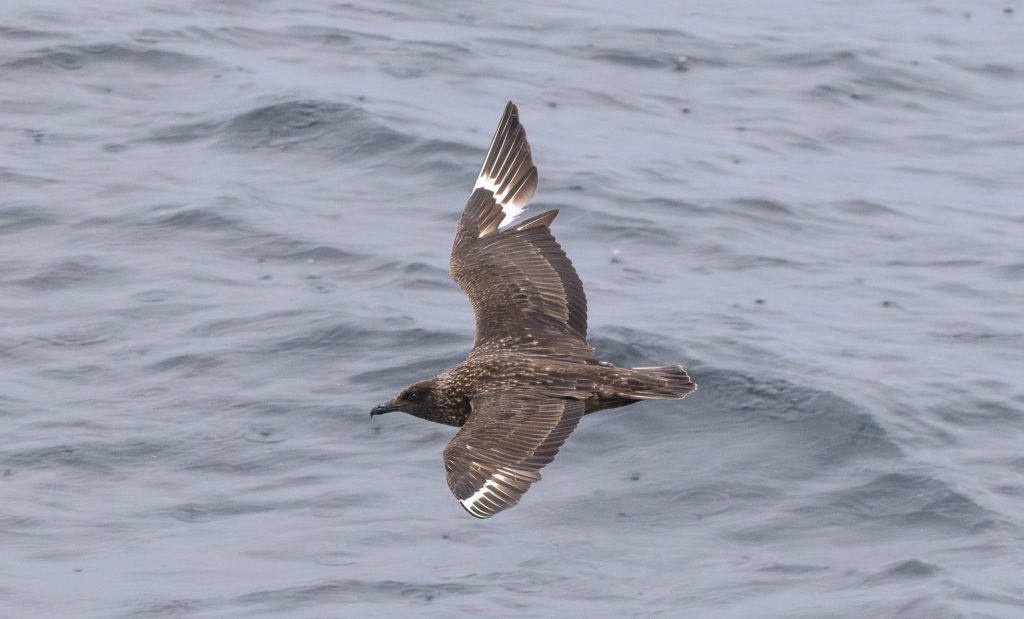
Another species severely hit by bird flu is Great Skua, unfortunately the number recorded this year has gone down again. The totals for the last five years are: 179, 131, 107, 70 and now only 29 this year. Evidence from their breeding grounds suggested they had a good year and have shown signs of recovery but that certainly hasn’t translated through to the birds wintering in the Celtic Sea and English Channel. One reason for this could be that it is mainly adult birds which stay around the UK in the winter months, first year birds head further south. It will be interesting to see if the numbers start creeping up in the coming years.
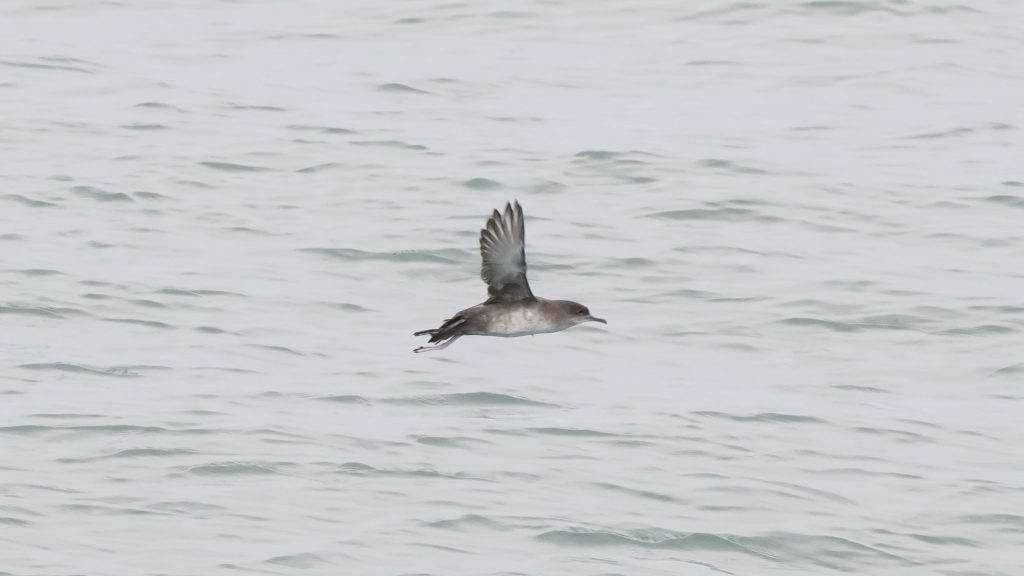
Balearic Shearwater were at their lowest since 2017. Most were seen on transects on the French side of the English Channel, which has become the norm in recent years, but there were fewer of them. Numbers had been high during August and September with counts of around 2000 in Lyme Bay, so it’s very likely they had headed back south earlier than the last few years.
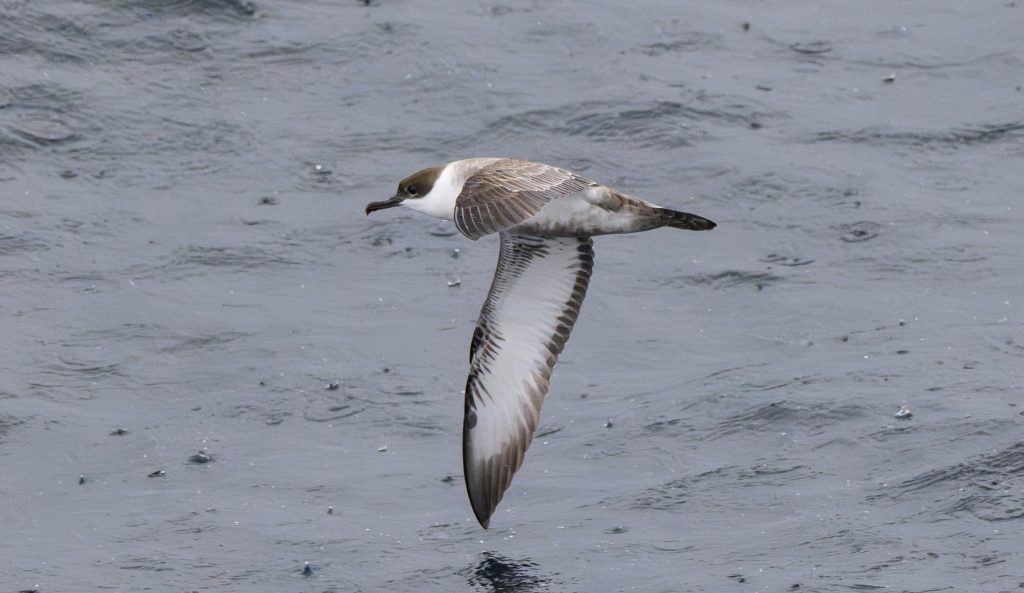
The huge numbers of Cory’s Shearwater were not repeated this year, but Great Shearwater were still around in very good numbers, now the third year running with numbers way higher than anything we saw pre-2023.
On the cetacean front numbers of Common Dolphin were down yet again, with just 1387 recorded. Most (65%) were recorded in pods of five or less and there were only five records where the pod size was greater than 20.
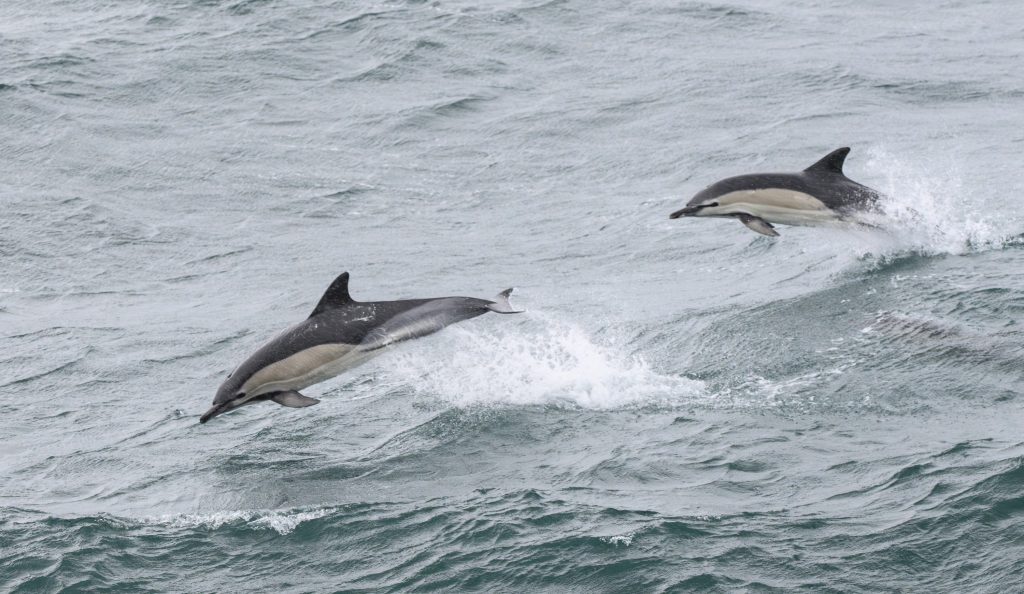
It was alarming that for the first time since the Peltic survey started no Harbour Porpoise were recorded, despite plenty of reasonable conditions in the English Channel in the first half of the survey.
Otherwise, sightings were very much in line with most years on the Peltic with one encounter with Bottlenose Dolphin, two encounters with Minke Whale, and three with Risso’s Dolphin.
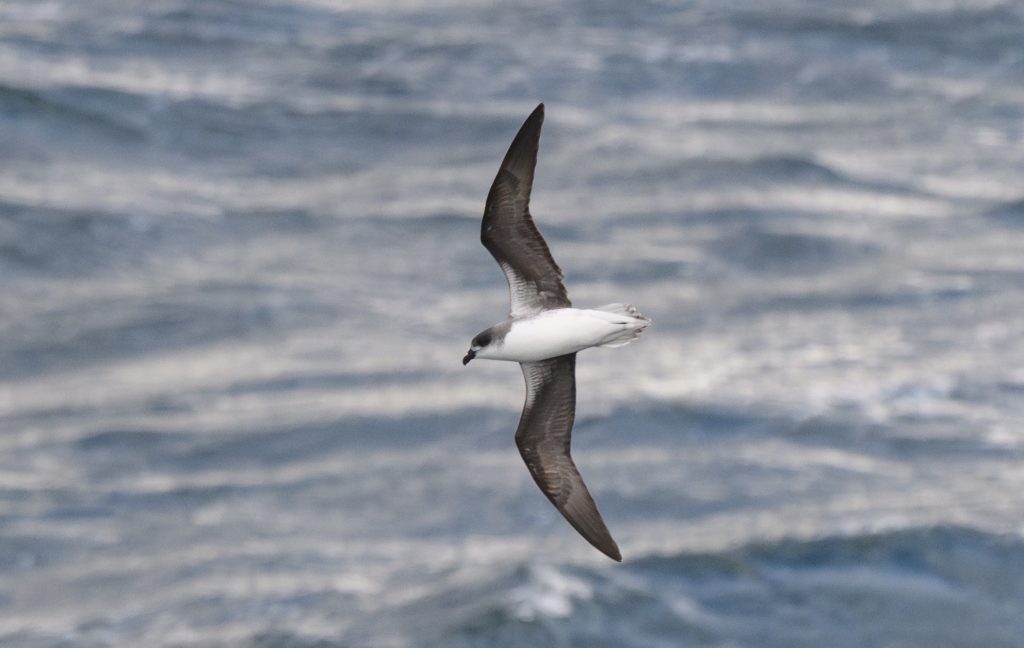
Bird of the survey was definitely the Fea’s-type Petrel on 23 October, which a Pterodroma expert we consulted with is confident is a Desertas Petrel. The Cetti’s Warbler on board the CEFAS Endeavour mid-Channel was perhaps the most unlikely bird, while the Short-eared Owl on the 22 October takes the prize as most photogenic.

